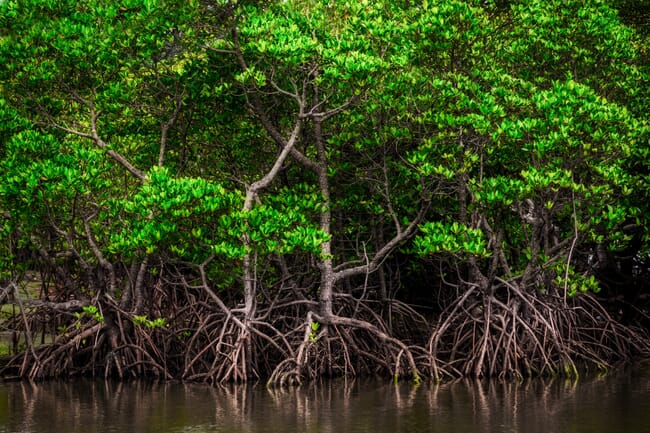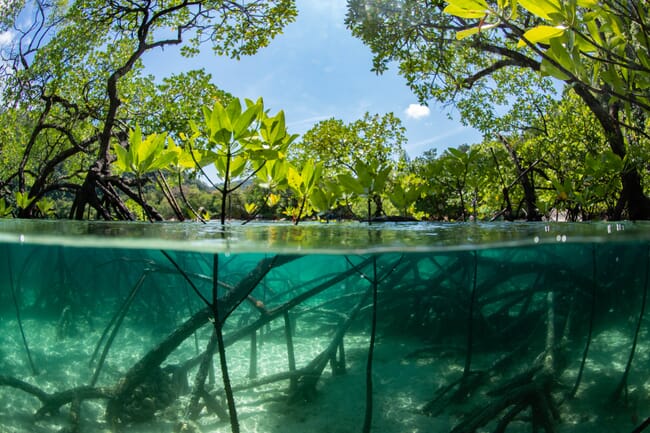
Coastal wetlands have been degraded and lost around the world and restoring them can be challenging.
The structures, made from potato starch, provide seedlings with protection from high-energy environments without limiting their growth. They break down over time, making way for the established plants to thrive.
Coastal wetlands, such as mangrove forests and saltmarshes, provide many benefits including protection from storm surges, and habitat for coastal wildlife. They also store atmospheric carbon, acting as a nature-based solution against climate change. However, coastal wetlands have been degraded and lost around the world and restoring them can be challenging.
Dr Stacey Trevathan-Tackett of Deakin University’s Blue Carbon Lab says that restoration efforts can be hampered by harsh environmental conditions that damage wetland plants at crucial early stages of their growth – making it important to constantly develop new methods to encourage growth.
“We are exploring new ways to help improve the success of restoration and recovery of wetlands,” Dr Trevathan-Tackett said in a press release. “This includes trialling new and creative techniques in different habitats and conditions, as well as working with local communities along the way.”
While mangrove seeds planted into these structures over the summer have started to sprout, researchers want to quantify survival and growth over time and determine how the novel approach is working and to make improvements along the way.
The project, titled Regenerating Our Coasts, is a three-year programme partnered with Beach Energy that focuses on research and outreach.
Beach’s CEO Morné Engelbrecht said: “Beach Energy is proud to partner with Deakin Uni’s Blue Carbon Lab to support research to help restore blue carbon ecosystems and accelerate coastal restoration. This is Beach’s largest ever environmental partnership and demonstrates our commitment to leaving a positive contribution to communities.”
“With the Regenerating Our Coasts programme, we are excited to see seedlings beginning to grow through the structures,” said Dr Trevathan-Tackett. “But they have a long way to go, and so do we in terms of trialling different approaches to maximise what this method can do.”
Not all coastal wetlands are the same, different environmental conditions, historical impacts, and even the types of plants and animals present influence the restoration success. With such diversity at play, the Blue Carbon Lab team aim to optimise these structures across different wetlands and plant species in Victoria’s Port Phillip Bay and Western Port Bay.

Mangrove seeds planted into the biodegradable structures have started to sprout over the summer months.
The trial site in Western Port has enlisted the help of citizen scientists, who will measure both the survival and growth of a batch of mangrove seedlings. The data collected as part of ongoing monitoring will help the researchers further develop restoration approaches at local mangrove sites.
“We see outreach as a vital part of the project,” said Dr Trevathan-Tackett. “Engaging with communities through education and knowledge-exchange means that more people understand the problem and support what we’re doing to solve it.
In turn, by getting involved in citizen science activities, they are contributing to research projects that will ultimately benefit restoration efforts,” Dr Trevathan-Tackett concluded.




